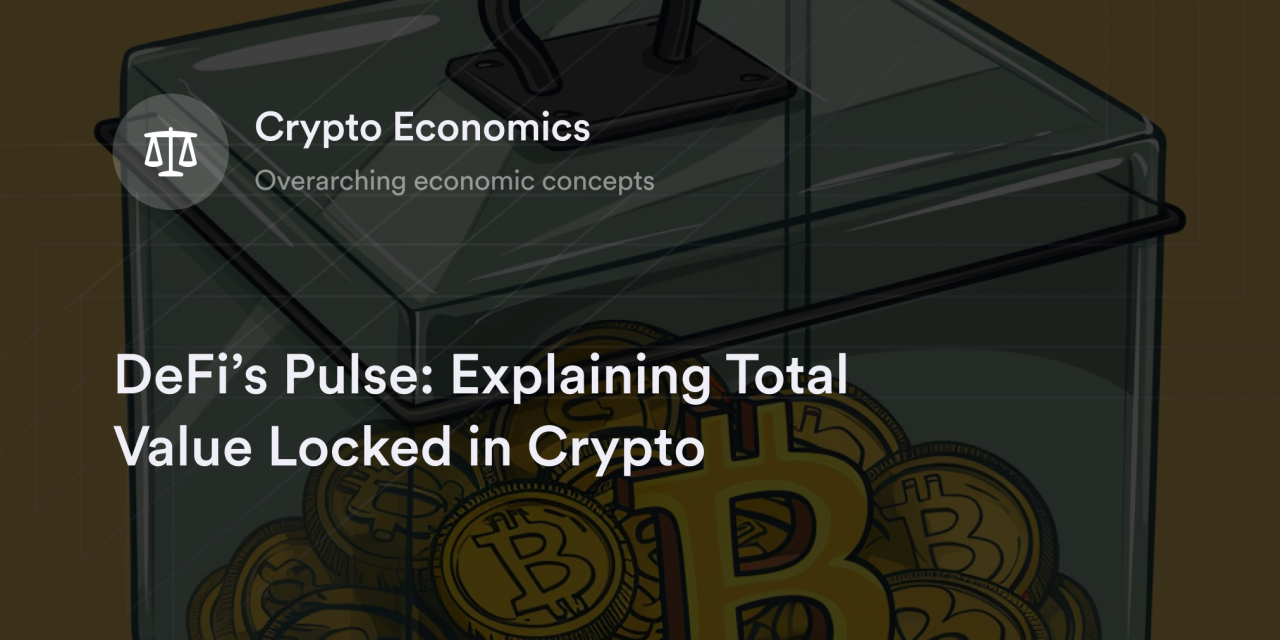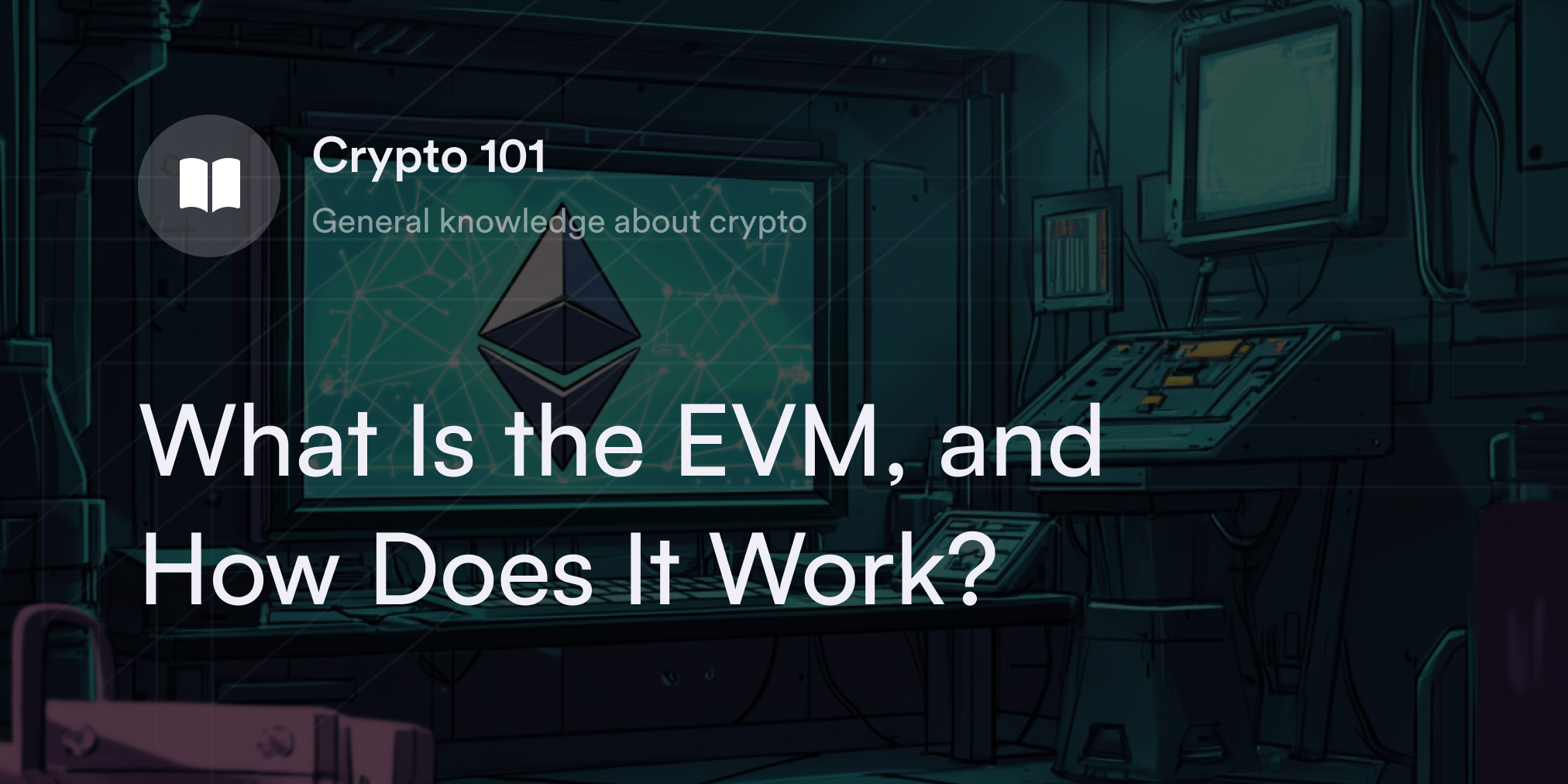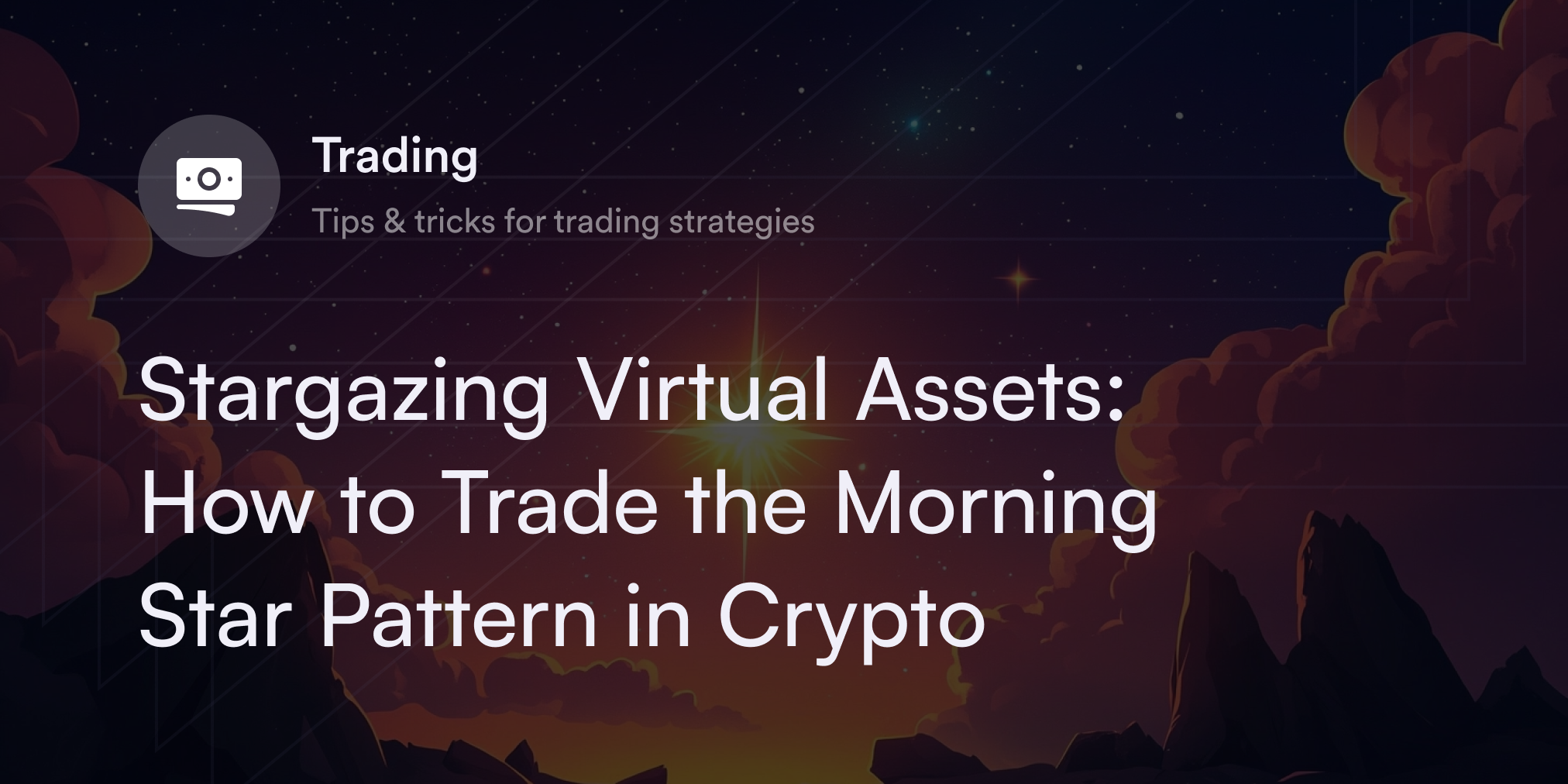


Crypto trading depends on market trends, asset values, and, most importantly, trust in decentralized finance (DeFi) protocols. This trust, often intangible and elusive, is crucial for successful and secure transactions in digital assets. Enter total value locked (TVL), a key metric encapsulating this trust.
In this guide, we’ll review what TVL is, how it works, and how to calculate it. We’ll also discuss its significance in DeFi and what it reveals about a protocol's health, liquidity, and user confidence.
What is “total value locked” in crypto?
TVL refers to a DeFi network’s overall health and represents the amount of crypto locked on the network and the number of assets currently being staked, deposited, or otherwise committed to various DeFi protocols or platforms. It measures the cumulative value of cryptocurrencies, tokens, and sometimes stablecoins across different platforms.
A high TVL typically indicates user confidence and a significant volume of assets managed by a DeFi protocol, potentially signaling its stability and potential for returns. Typically denominated in a standard currency like the U.S. dollar, TVL provides a common reference for comparison, crucial in a market as volatile and diverse as cryptocurrencies.
Being dynamic and real time, TVL fluctuates with market values and fund movements within DeFi protocols. This makes it a useful tool for anyone involved in DeFi, offering insights into the scale, liquidity, and reliability of different projects and platforms.
How does TVL work?
TVL works by aggregating the total value of all assets users have staked, lent, or otherwise committed to DeFi platforms.
Staking, while not entirely new to the blockchain world, gained significant prominence during the DeFi boom of the late 2010s and early 2020s. This period marked a shift in the crypto industry, aiming to integrate processes like traditional finance into cryptocurrency. Staking involves individuals or entities pooling their digital assets and locking them in a DeFi protocol. These assets often serve multiple purposes, including acting as collateral for loans, providing liquidity for decentralized exchanges (DEXs), or participating in yield farming activities.
While these assets are locked, the stakeholders earn rewards, which can come from transaction fees, interest payments in lending protocols, or rewards distributed by the DeFi platforms. This process enables users to generate profit from their digital assets and contributes to the functionality and security of the DeFi ecosystem.
The total amount of cryptocurrency pooled and locked on a blockchain for these various staking activities is called TVL. A larger TVL indicates higher user engagement and trust in the platform, suggesting a robust and active protocol. It's a sign of the platform's capability to facilitate various DeFi services, potentially leading to more opportunities for users to earn interest and profits over time.
How to calculate TVL
Calculating TVL offers a snapshot of the amount of capital committed to DeFi platforms, indicating user trust and platform popularity. Here's a breakdown of the elements involved in its calculation and the formula used:
Elements involved in calculating TVL
Asset identification: First, identify all the different types of assets deposited in the DeFi protocol, and form a TVL crypto list.
Market value assessment: Determine each asset’s current market value. This is crucial as the value of cryptocurrencies can be highly volatile and subject to frequent change.
Common currency conversion: Convert the value of all assets into a common currency using the current exchange rates. This standardization is necessary for an accurate and comparable measure across different assets and protocols.
Value aggregation: Finally, aggregate the converted values of all assets to arrive at the total value. This sum represents the TVL of the DeFi protocol.
Formula for calculating TVL
TVL = ∑(Quantity of each asset × Current market value of the asset)
For example, if a protocol has 5,000 ETH (with each ETH valued at $3,000) and 2,000,000 USDC (valued 1:1 with USD), the TVL would be calculated as:
TVL = (5,000 \times $3,000) + (2,000,000 \times $1) = $17,000,000
Here, the quantities of ETH and USDC are multiplied by their respective market values, and the results are summed to determine the TVL.
Note: The TVL formula’s simplicity belies the complexity involved in accurately determining current market values and ensuring reliable and up-to-date data sources. It's also important to consider the liquidity and volatility of the assets involved, as these factors can significantly impact the real-time value of TVL.
Why is TVL important?
TVL is a useful metric in DeFi. It’s known for measuring a DeFi protocol’s “health.” But that’s not all. Here’s how TVL helps traders make better decisions:
Indicates market sentiment: TVL reflects the confidence of traders in the DeFi space. An increasing TVL generally signals positive market sentiment, while a decreasing TVL might suggest declining confidence or a shift in market trends.
Gauges liquidity: Liquidity is useful in DeFi for operations like trading, lending, and yield farming. TVL provides insight into the liquidity available in a protocol, which is essential for smooth functioning and minimizing slippage in transactions.
Helps with comparative analysis: TVL allows traders to compare different DeFi protocols, helping them identify which platforms attract more assets and, by extension, potentially more user engagement and trust.
Highlights protocol growth: On a broader scale, the cumulative TVL across all DeFi platforms can indicate the overall growth and maturity of the DeFi sector. A rising total TVL across the ecosystem may suggest increasing adoption and development of DeFi solutions.
Are there any limitations to TVL?
Like everything in cryptocurrency and trading, TVL comes with assorted risks and downsides, so highlighting the negatives to ensure proper trading practices is essential.
For example, while TVL measures the number of assets locked on a protocol, it doesn’t measure the protocol’s activity levels, which is useful to determining a network’s size and strength. A blockchain with high TVL but low activity levels could present unwarranted problems for traders.
Also, while TVL offers a general idea of a network’s size and stability, it doesn’t offer specifics about its background, and traders should extensively research the reputation of the network they’re considering before jumping in headfirst simply because the TVL appears high.
Lastly, specific market conditions can affect TVL, which may cause the value of the contained assets to dip or experience volatility. Traders should examine how often a blockchain’s TVL is audited to ensure prices are regularly updated and that all corresponding data is correct.
Learn more about crypto with dYdX Academy
Find out more about the crypto world––including blockchain, decentralization, and DeFi––on dYdX Academy. Our in-house resource library houses dozens of easy-to-understand guides on all things crypto.
dYdX also offers eligible traders a decentralized exchange to trade crypto perpetual contracts with up to 20x leverage. Learn more about dYdX and our products on our official blog, and eligible traders can start trading on dYdX today.
Disclosures
The content of this article (the “Article”) is provided for general informational purposes only. Reference to any specific strategy, technique, product, service, or entity does not constitute an endorsement or recommendation by dYdX Trading Inc., or any affiliate, agent, or representative thereof (“dYdX”). Use of strategies, techniques, products or services referenced in this Article may involve material risks, including the risk of financial losses arising from the volatility, operational loss, or nonconsensual liquidation of digital assets. The content of this Article does not constitute, and should not be considered, construed, or relied upon as, financial advice, legal advice, tax advice, investment advice, or advice of any other nature; and the content of this Article is not an offer, solicitation or call to action to make any investment, or purchase any crypto asset, of any kind. dYdX makes no representation, assurance or guarantee as to the accuracy, completeness, timeliness, suitability, or validity of any information in this Article or any third-party website that may be linked to it. You are solely responsible for conducting independent research, performing due diligence, and/or seeking advice from a professional advisor prior to taking any financial, tax, legal, or investment action.
You may only use the dYdX Services in compliance with the dYdX Terms of Use available here, including the geographic restrictions therein.
Any applicable sponsorship in connection with this Article will be disclosed, and any reference to a sponsor in this Article is for disclosure purposes, or informational in nature, and in any event is not a call to action to make an investment, acquire a service or product, or purchase crypto assets. This Article does not offer the purchase or sale of any financial instruments or related services.
By accessing this Article and taking any action in connection with the information contained in this Article, you agree that dYdX is not responsible, directly or indirectly, for any errors, omissions, or delays related to this Article, or any damage, injury, or loss incurred in connection with use of or reliance on the content of this Article, including any specific strategy, technique, product, service, or entity that may be referenced in the Article.







